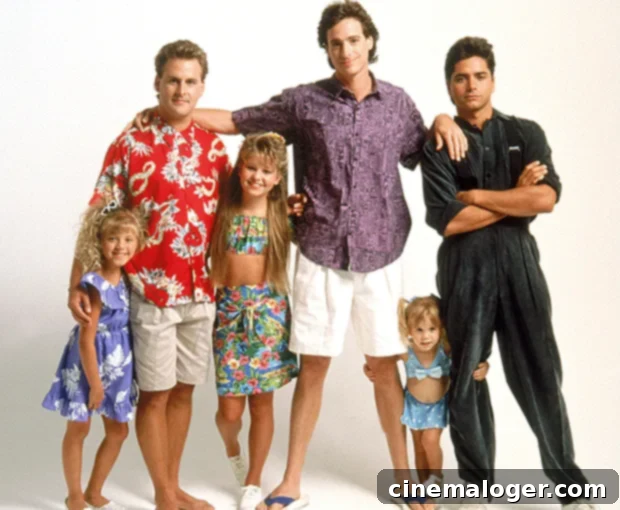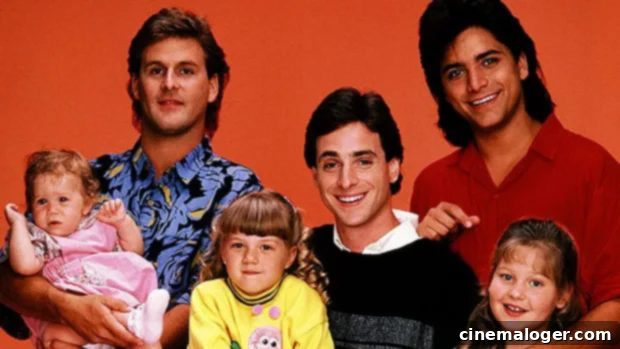Fuller House Finale: Remembering the Beloved Cast, Their Journey, and Lasting Legacy
Today marks a poignant moment for fans worldwide as Fuller House, the cherished sequel to the iconic Full House, concludes its heartwarming run on Netflix. For decades, the Tanner and Gibbler families have graced our screens, bringing laughter, comfort, and invaluable life lessons to generations. As we bid a bittersweet farewell to the familiar San Francisco townhouse, it’s the perfect time to reflect on the incredible journey of these beloved characters and the actors who brought them to life, exploring their evolution from childhood stars to the accomplished individuals we see today.
The Enduring Appeal of Full House: A Family Phenomenon Begins
The story began in September 1987, when television audiences were first introduced to the unconventional yet undeniably loving Tanner household. Full House captivated viewers with its unique premise: news anchor Danny Tanner (the late, great Bob Saget), a recently widowed father, enlists the help of his free-spirited rock musician brother-in-law Jesse Katsopolis (John Stamos) and his goofy, cartoon-loving best friend Joey Gladstone (Dave Coulier) to raise his three young daughters. D.J. (Candace Cameron Bure), the eldest, navigated the complexities of adolescence; Stephanie (Jodie Sweetin), the sassy middle child, often provided comic relief; and Michelle (played by twin sisters Mary-Kate & Ashley Olsen), the adorable youngest, stole hearts with her catchphrases.
What followed were eight seasons of pure television magic, weaving together themes of grief, resilience, friendship, and the unwavering power of family. The show resonated deeply with viewers, offering a comforting blend of humor and heartfelt moments. Each episode tackled age-appropriate issues, from sibling rivalries and first crushes to more serious topics like peer pressure and loss, always delivering a valuable moral lesson. The undeniable chemistry among the cast members—both adults and children—was the show’s bedrock, creating an on-screen family that felt incredibly real and relatable to millions around the globe. Full House wasn’t just a sitcom; it became a cultural touchstone, a symbol of wholesome family entertainment that transcended language barriers and generations.
A Long-Awaited Reunion: The Birth of Fuller House
After Full House concluded in 1995, fans yearned for more. The bond forged between the cast members remained strong off-screen, fueling hopes for a reunion. Over two decades later, this dream became a reality with the premiere of Fuller House on Netflix in February 2016. The continuation series ingeniously mirrored the original’s premise, bringing the adult Tanner daughters—and their lifelong best friend—back to the iconic San Francisco home. This time, it was D.J. Tanner-Fuller, a widowed veterinarian, who needed help raising her three sons. Her sister Stephanie, now a free-spirited musician, and her quirky best friend Kimmy Gibbler (Andrea Barber), along with Kimmy’s teenage daughter Ramona, move in to support her.
Fuller House masterfully tapped into a deep well of nostalgia while simultaneously charting new territory. It allowed a new generation of viewers to fall in love with these characters, while original fans delighted in seeing their childhood heroes navigate adulthood, parenthood, and the ever-present challenges of life. The show successfully blended the familiar warmth and humor of its predecessor with contemporary storytelling, exploring modern family dynamics, career aspirations, and the unique bond of female friendship. The decision to bring the cast back together was met with overwhelming enthusiasm, proving that the legacy of the Tanner family was as vibrant and relevant as ever.

Navigating Challenges and Embracing Change in Fuller House
While Fuller House successfully recaptured much of the original’s magic, it also faced its share of real-world challenges. Most notably, Mary-Kate and Ashley Olsen, who famously shared the role of Michelle Tanner, opted not to return for the sequel. The show respectfully addressed their absence by explaining that Michelle was busy building her fashion empire in New York. This allowed the narrative to focus more intensely on the D.J., Stephanie, and Kimmy dynamic, emphasizing their evolution into strong, independent women raising their own children and navigating the complexities of modern co-parenting.
Another significant challenge arose when Lori Loughlin, who played Aunt Becky, was involved in the widely publicized college admissions scandal. Following her legal issues, Loughlin did not return for the final season, requiring the show to adapt. Despite these hurdles, the core cast, including guest appearances from Saget, Stamos, and Coulier, remained committed to delivering the heartfelt and humorous content fans expected. The show skillfully integrated new characters, such as Kimmy’s brother Jimmy Gibbler and D.J.’s love interest Steve Hale, while revisiting cherished running gags and creating new inside jokes that endeared it to both long-time devotees and fresh viewers.
Character Arcs: From Childhood Stars to Mature Storytellers
The “then and now” aspect of the cast is perhaps one of the most compelling reasons for Fuller House‘s success. Candace Cameron Bure, Jodie Sweetin, and Andrea Barber grew up on screen, and their characters’ journeys mirrored their own. D.J.’s transition from a typical teenager to a widowed mother of three showcased Candace Cameron Bure’s depth and versatility. Stephanie’s evolution from a mischievous middle child to a successful DJ and eventually a loving mother, thanks to surrogacy, offered Jodie Sweetin powerful storylines to portray. And Kimmy Gibbler, once the quirky neighbor, transformed into an integral part of the extended family, with Andrea Barber embracing her character’s unique charm and heart.
Beyond the main trio, the return of Bob Saget, John Stamos, and Dave Coulier in their iconic roles provided vital connective tissue to the past. Their appearances were always met with cheers, reminding audiences of the unbreakable bond that defined the original series. Seeing these actors, who began their journey together decades ago, share the screen once more, not just as friends but as an extended family, underscored the enduring appeal and authenticity of their relationships. This intergenerational storytelling allowed Fuller House to bridge the gap between classic sitcom charm and contemporary family narratives, offering something truly special for every viewer.
A Bittersweet Farewell: The Lasting Legacy of the Full House Universe
Today, as the final episodes of Fuller House debut on Netflix, fans prepare to say goodbye to D.J., Stephanie, Kimmy, and the entire Fuller-Gibbler-Tanner clan. It’s a bittersweet moment, marking the conclusion of a chapter that has spanned more than thirty years. The San Francisco house, which has served as a backdrop for countless memories, milestones, and heartfelt goodbyes, will forever hold a special place in the hearts of viewers who consider it a second home.
The legacy of Full House and Fuller House is not just about ratings or awards; it’s about the profound impact these shows have had on popular culture. They represent a comforting constant, a beacon of family values, love, and unwavering support in an ever-changing world. The shows taught us the importance of laughter, friendship, and facing life’s challenges with courage and an open heart. As the credits roll for the last time, the memories, the catchphrases, and the indelible lessons learned from the Tanner-Gibbler household will undoubtedly live on, inspiring new generations to embrace their own fuller lives, surrounded by the people they love most. The journey of this beloved cast, from fresh-faced youngsters to seasoned veterans, stands as a testament to the power of enduring television and the magic of a family that always has room for one more.
